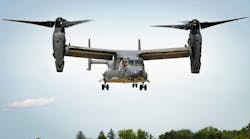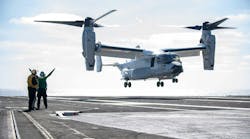The International Helicopter Safety Team (www.IHST.org) has compiled data from its third annual survey of civil helicopter operators located in key regions around the world in order to gain a broader understanding of where safety initiatives are being implemented. Participation in the survey more than doubled compared to previous years.
The IHST’s worldwide regional teams have analyzed more than 1,000 helicopter accidents and have concluded that the following seven areas offer the best opportunities to prevent helicopter accidents:
· The implementation of Safety Management Systems (SMS),
· A structured program for initial and recurrent training,
· The implementation of Health & Usage Monitoring Systems (HUMS),
· The implementation of Flight Data Monitoring (FDM) programs,
· Structured programs to fully comply with manufacturers’ recommended maintenance practices,
· Installation of Wire strike prevention systems,
· Usage of Night Vison systems when warranted.
The 2017-18 IHST survey looked at where these best practices were followed within specific segments of the helicopter industry and within regions around the world. Overall, the key recommended safety practices have been implemented most comprehensively by operators in the sectors of Helicopter Air Ambulance, Law Enforcement and Offshore/Oil operations. The lowest implementation occurs in the Personal/Private segment of the industry and in TV/Radio News gathering. From the survey, here is the complete list of segments most following to least following the best practices:
1) Air Ambulance 8) Aerial Observation
2) Law Enforcement 9) Agricultural Application
3) Offshore/Oil 10) Business Aviation
4) Firefighting 11) Air Tours/Sightseeing
5) External Load 12) Personal/Private
6) Utilities/Construction 13) TV/Radio News Gathering
7) Air Taxi/Charter
Within key regions of the world, application of the best safety practices is patchy. According to the survey, here is a breakdown highlighting greater usage and lesser usage of the key safety recommendations:
Greater Usage Lesser Usage
United Kingdom Training, Safety Mgmt Sys. Flight Data Monitoring, Wire Strike
France Maintenance HUMS
Germany Maintenance Safety Mgmt Systems
United States Training, HUMS Flight Data Monitoring
Canada HUMS, Maintenance Night Vision, Wire Strike
Mexico HUMS, Safety Mgmt Sys. Night Vision
Brazil Safety Mgmt Systems HUMS, Wire Strike
Australia Safety Mgmt Systems Flight Data Monitoring
New Zealand Training HUMS, Wire Strike
The detailed report for the IHST safety initiative survey can be found on the “Repository” page on its web site: http://www.ihst.org/Default.aspx?tabid=3094&language=en-US
More information about the IHST, its reports, safety tools, Reel Safety audio/video presentations and YouTube safety videos can be obtained at its web site at www.IHST.org and on the IHST Facebook page.



